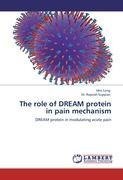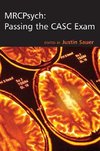
-
 Anglický jazyk
Anglický jazyk
The role of DREAM protein in pain mechanism
Autor: Idris Long
The recent development in pain research is the discovery of the Downstream Regulatory Element Antagonistic Modulator (DREAM)protein. The DREAM protein has been implicated in suppressing the genetic machinery that reads the DNA code for prodynorphin and thus,... Viac o knihe
Na objednávku, dodanie 2-4 týždne
61.60 €
bežná cena: 70.00 €
O knihe
The recent development in pain research is the discovery of the Downstream Regulatory Element Antagonistic Modulator (DREAM)protein. The DREAM protein has been implicated in suppressing the genetic machinery that reads the DNA code for prodynorphin and thus, reducing dynorphin production which it important for pain mechanism. The reduced pain behaviour in DREAM-knockout mice raised the hypothesis of "no DREAM, no pain". The finding from the DREAM-knockout mouse model may be useful for designing drugs that can directly regulate genes and reduce their side effects. There is no doubt that designing drugs via the genetic engineering approach has a great potential and most certainly, DREAM gene is one of the significant potential candidates. Before getting to the point of drug design, it is critical to determine the physiological role of DREAM protein in acute pain in the normal rats. From the findings in this study, it can be suggested that the hypothesis of "no DREAM, no pain" is probably not relevant in the normal rats. Besides its well known role as a transcriptional repressor, DREAM protein may have other functional roles in pain modulation in the spinal cord of the normal rat.
- Vydavateľstvo: LAP LAMBERT Academic Publishing
- Rok vydania: 2011
- Formát: Paperback
- Rozmer: 220 x 150 mm
- Jazyk: Anglický jazyk
- ISBN: 9783845433936












